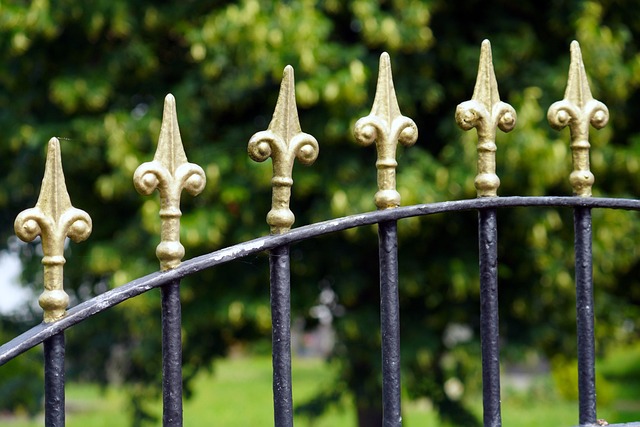Large properties present unique fencing challenges, demanding durable, cost-efficient solutions that cater to expansive boundaries. This article explores innovative approaches to meet these needs, delving into the pros and cons of traditional fencing versus modern, budget-friendly alternatives. We scrutinize sustainable materials, assess DIY installations, guide hiring professionals, and offer maintenance advice to ensure long-lasting investments, transforming your property’s exterior into a secure, aesthetically pleasing haven.
- Understanding Fencing Needs for Large Properties
- Traditional Fencing vs. Cost-Effective Alternatives
- Sustainable and Long-Lasting Materials
- DIY Installations: A Viable Option?
- Professional Services: Hiring the Right Team
- Maintenance Tips to Maximize Your Investment
Understanding Fencing Needs for Large Properties
When it comes to large properties, understanding fencing needs goes beyond mere aesthetic considerations. Key factors include security and safety, privacy, noise control, and defining property boundaries. Each aspect demands specific materials and designs tailored to withstand harsh weather conditions, high winds, and potential wildlife incursions.
Additionally, for expansive landscapes, scalability becomes essential. Fencing solutions should be able to span wide areas without compromising strength or structural integrity. Moreover, low-maintenance requirements are paramount to ensure the longevity of the fence, aligning with the overall property management strategy.
Traditional Fencing vs. Cost-Effective Alternatives
Traditional fencing materials and methods can be expensive, especially for large properties. Standard options like wood or metal railings often require extensive labor and regular maintenance, driving up costs over time. However, there’s a growing trend towards cost-effective alternatives that offer both durability and aesthetic appeal.
Innovative materials such as vinyl, composite, or chain link fences provide long-lasting protection at a fraction of the price. These modern options are low-maintenance, resistant to rot, rust, and damage from pests, and can be installed more quickly than traditional methods. Furthermore, they come in various styles and colors, allowing homeowners to personalize their outdoor spaces without breaking the bank.
Sustainable and Long-Lasting Materials
When considering fencing solutions for large properties, opting for sustainable and long-lasting materials is both environmentally responsible and cost-effective in the long run. Modern fencing options now incorporate eco-friendly materials that mimic traditional fence designs but offer enhanced durability. For instance, recycled plastic and composite materials are becoming increasingly popular due to their resistance to rot, rust, and fading, ensuring your fence remains as good as new for years.
These innovative materials not only save you from frequent repairs or replacements but also contribute to a reduced environmental footprint. They are often made from reclaimed resources, diverting waste from landfills and reducing the need for new raw materials. Additionally, many manufacturers use eco-friendly production methods, further minimizing their carbon footprint.
DIY Installations: A Viable Option?
DIY installations can be a viable option for those looking to save on fencing costs, especially for large properties. With the right tools and resources, many homeowners are embracing do-it-yourself (DIY) projects, including fencing. Online tutorials and videos offer step-by-step guidance, making complex tasks more manageable. Additionally, purchasing materials in bulk or opting for budget-friendly options like recycled or second-hand materials can significantly reduce expenses.
However, while DIY installations might be cost-effective, they also come with challenges. Complex terrain, accessibility issues, and the sheer size of large properties can make installation difficult. Time constraints and a lack of experience may lead to subpar results. Therefore, it’s essential to carefully consider one’s capabilities and resources before undertaking a DIY fencing project for a large property.
Professional Services: Hiring the Right Team
When considering fencing for large properties, engaging professional services is an essential step. You’ll want to hire a team with extensive experience and a proven track record in installing durable and aesthetically pleasing fences. Look for experts who can offer customized solutions tailored to your property’s unique features and security needs.
A reliable fencing contractor should provide detailed consultations, site assessments, and accurate material estimates. They should also be equipped to handle various types of fencing, from traditional wooden options to modern, high-security alternatives. Additionally, ensure they offer aftercare services like maintenance and repairs to guarantee your fence remains in excellent condition over time.
Maintenance Tips to Maximize Your Investment
Fencing is a significant investment, and proper maintenance can extend its lifespan and keep your property looking its best. Regular cleaning is essential; brush or sweep debris away from the fence regularly, and use a mild detergent for any dirt or stains. Check for loose or damaged panels, posts, or hardware at least once a month, replacing any worn-out components promptly to prevent further damage.
Inspecting and treating your fence regularly can also help protect it against rust, rot, and pest infestations. Use weatherproof treatments to preserve wood fences, and consider applying a protective coating every few years. For metal fencing, regular washing with a soft brush and mild detergent, followed by a coat of rust-preventive paint or sealant, will keep it looking new.
